Reupholstery | We’ve Got It Covered
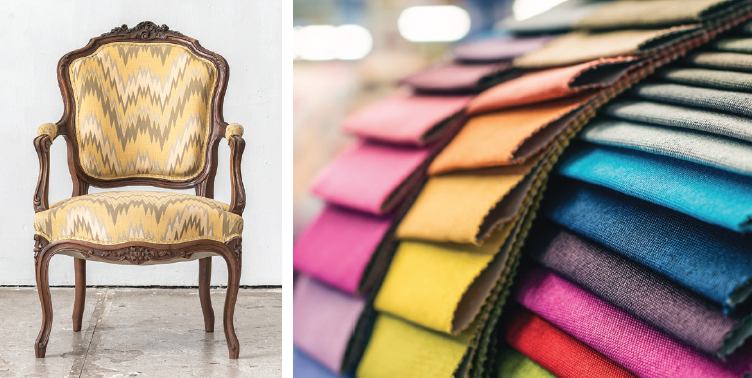
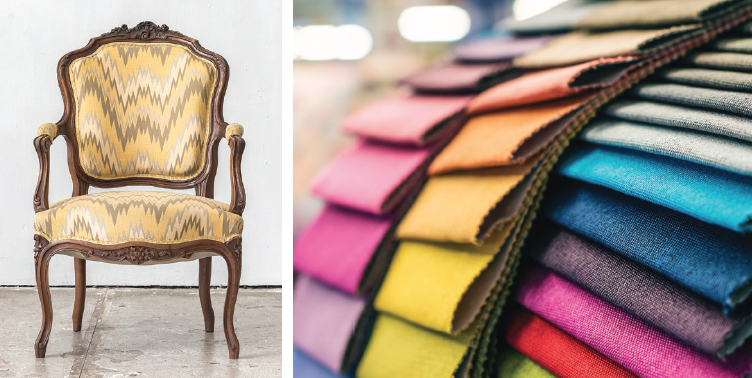
If you’ve noticed that a room in your home is looking drab, with tired or threadbare fabric on the furniture, or a piece has been cleaned one too many times, it’s probably time for a furniture reboot. You can choose to start over and buy something new, or you can consider upholstery restoration—and sometimes this is a tough decision, since both options can carry significant costs.
So how do you make the decision to reupholster… or not? Start by carefully inspecting the piece of furniture in question, or ask an upholsterer to help with this. Examine the piece’s frame, and make sure it is made of hardwood. Inspect the corner braces to be sure they are strong and intact. The underlying construction should be stable; test the piece to make sure that it doesn’t rock while being used. A recognizable manufacturer’s name, such as Henredon, Vanguard or Michael Thomas, usually indicates a good quality piece. Though if you bought the piece in question many years ago, and it is showing signs of structural wear and tear, it might not be worth updating.
If the piece seems to be in good shape, and is of long-lasting quality—and if you like the look and comfort the piece offers, reupholstering might be a good choice. But how much will an upholstery job cost? This varies greatly according to the fabric you choose, the size of your piece, the details—welting, trims, buttons, skirts—as well as your location and who completes the job for you. Experts suggest a very broad range of estimates for labor only:
- a wing chair with contrasting welt, decorative trim and tailored skirt: $450-$700;
- a 3-seat and 3-back-cushioned sofa: $850-$1,250;
- a 1-seat and 1-back-cushioned club chair: $550-$700;
- an unskirted ottoman with attached cushion: $225-$300.
At these prices—and the fabric will be an extra cost—you may decide to buy a new piece of furniture after all. But let’s assume that the upholstery project is a go because, after all, it is your favorite chair, and it is structurally sound. Or perhaps everything in the room in question looks too matchy or too traditional, and just needs a pop of color or a bit of interest. Perhaps reupholstering just one piece will breathe new life into a whole room and ultimately save you some money, at least in the short term by allowing you to put off a full remodel.
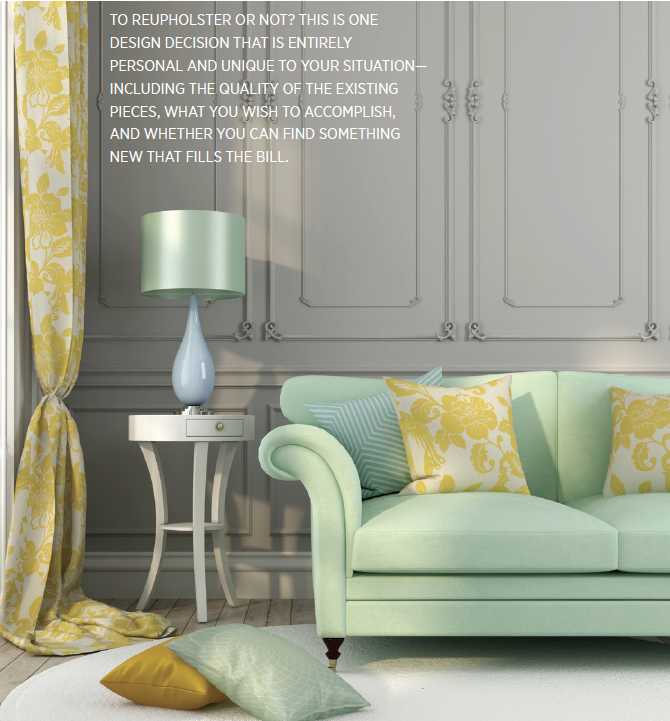
In selecting fabric, the appropriate weight will depend on where and how the piece of furniture will be used. Living/family room furniture that’s going to see a lot of traffic requires heavy duty upholstery-grade fabric, whereas a bedroom chair that is seldom sat upon could use a lighter, more decorative fabric. Select a fabric that will update the piece; go from a solid to a pattern, or a complete change of color instead of taking the safe route. Take home a fabric sample or borrow a bolt, and drape it over as much of the piece as possible. Live with it for a few days before making a final decision. Keep in mind the current trend of mixing styles for interest; a blend of traditional and contemporary, or a modern fabric on a traditional piece can go a long way to keep a room from looking stuffy or dated.
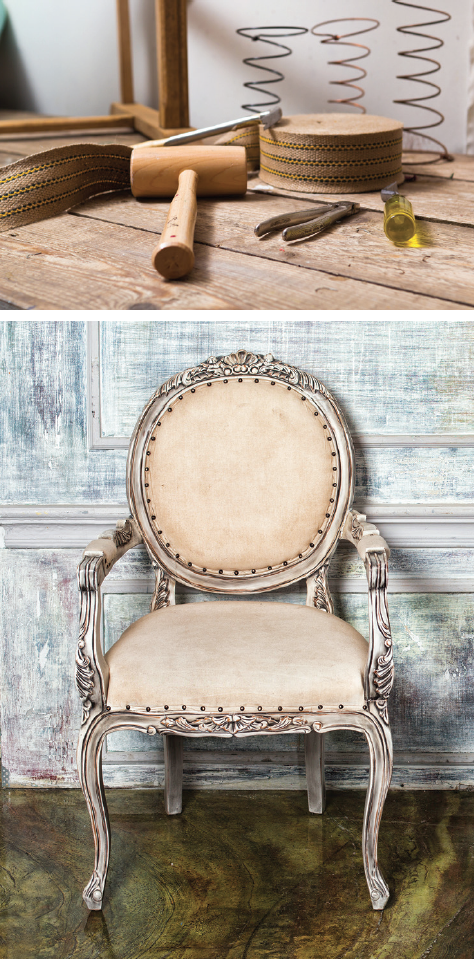 Retailers who sell fabric as well as designers and upholsterers can (and should!) help you determine how much fabric you will need. One website that can give you a ballpark figure is FabricGuru.com, which illustrates over 60 styles of chairs and sofas with measurements, to give you an idea of the amount of fabric required for a project. However, always confirm the amount of fabric you need with the person doing the job. The upholsterer will know the exact amount needed, and will take into account the fabric repeat as well as all the folds and overlaps that will arise. When purchasing fabric, make sure you order enough—you want to be sure all the fabric for the project comes from the same dye lot and that you have extra available if you need it.
Retailers who sell fabric as well as designers and upholsterers can (and should!) help you determine how much fabric you will need. One website that can give you a ballpark figure is FabricGuru.com, which illustrates over 60 styles of chairs and sofas with measurements, to give you an idea of the amount of fabric required for a project. However, always confirm the amount of fabric you need with the person doing the job. The upholsterer will know the exact amount needed, and will take into account the fabric repeat as well as all the folds and overlaps that will arise. When purchasing fabric, make sure you order enough—you want to be sure all the fabric for the project comes from the same dye lot and that you have extra available if you need it.
You can change the shape and contour of a piece by adding contrasting welt to define the lines. This works best on a sculptural piece like a wing chair that has curves. A new look can result from a change of the skirt: add one, remove one, or install the skirt higher on the piece giving the piece a more elongated look. Removing tufting or channeling will change the shape of the piece, transforming it from old-fashioned to modern.
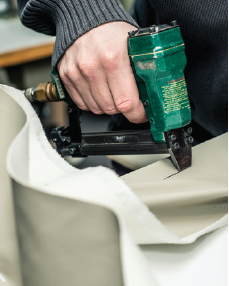 Embellishments are exciting! Trims, tassels, fringe and cording—whether beaded, braided, fabric or lacy—provide the icing on the cake, adding pizzazz to your upholstery project. Decorative upholstery “clavos” (Spanish for “nails,” also known as decorative tacks) have been used for many years to accent furniture pieces and continue to be a hot trend. You can choose from literally hundreds of different decorative nail looks and sizes to add a special touch to your newly reupholstered piece.
Embellishments are exciting! Trims, tassels, fringe and cording—whether beaded, braided, fabric or lacy—provide the icing on the cake, adding pizzazz to your upholstery project. Decorative upholstery “clavos” (Spanish for “nails,” also known as decorative tacks) have been used for many years to accent furniture pieces and continue to be a hot trend. You can choose from literally hundreds of different decorative nail looks and sizes to add a special touch to your newly reupholstered piece.
So…to reupholster or not? This is one design decision that is entirely personal and unique to your situation—including the quality of the existing pieces, what you wish to accomplish, and whether you can find something new that fills the bill. If you do decide to reupholster, make all the involved decisions with care. Only then will the result add that “Wow!” factor to your home.
design, diy, henredon, michael thomas, reupholster, upholstery, vanguard






